Study in the United States
There is a reason why the United States (US) has the highest number of international students in the world. Read through our guide to find out why, and possibly gain an incentive to study in the US for your future studies.
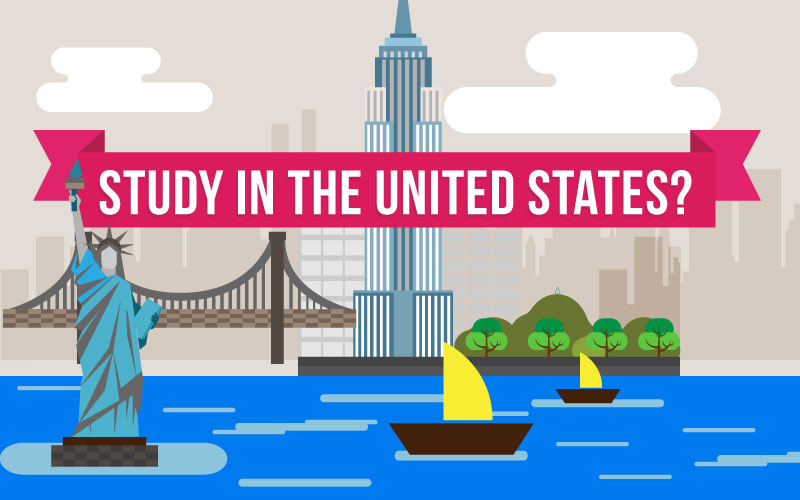
A Quick Intro to the US
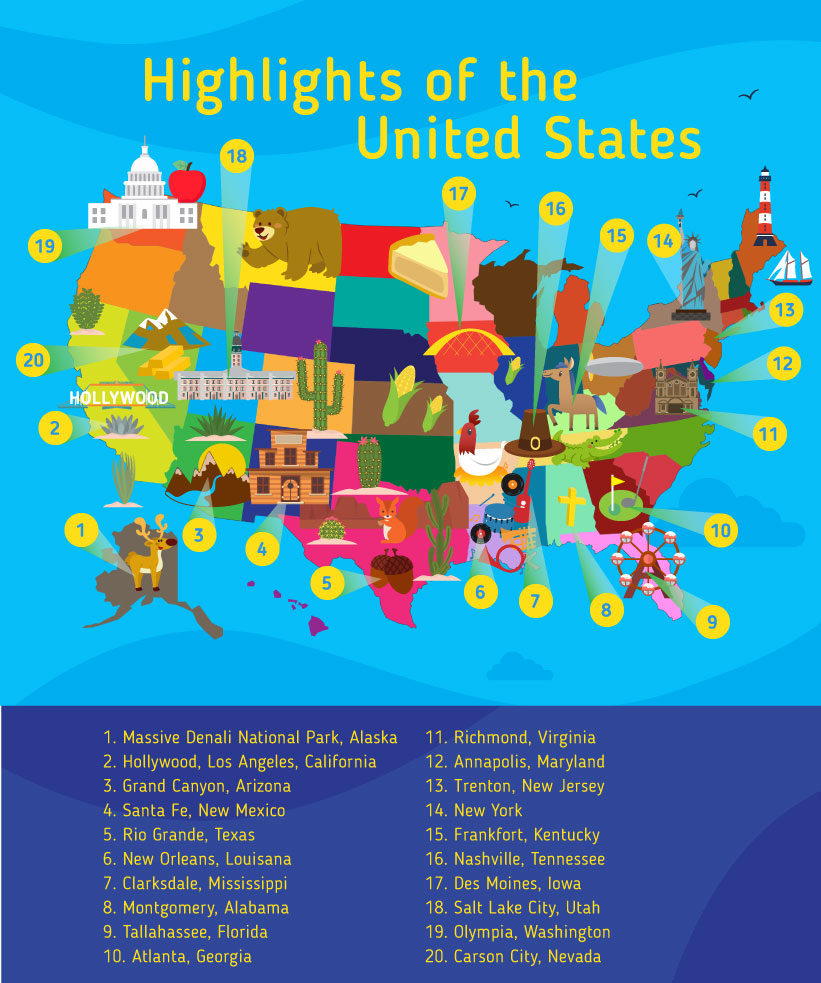
From the skyscrapers of New York to the beaches of California, the US has a lot to see from East to West. People visit this country for its unique sights and sounds. Even if you cannot visit the US yet, it’s rare that you are not aware of the country and its dominating hold on the world. With the multitude of films, TV series, novels and news among other things coming from the US, you may easily be very much so knowledgeable about the country and its significance in the world even at a young age.
As the fourth largest land area in the world, the US is truly a melting pot of cultures – with people from all nations coming to this country. The birthplace of the American dream and home to several of the world’s greats in different industries, the US is a definite force to be reckoned with in today’s day and time.
These in itself are the reasons why international students are attracted to study in the US; from all they have seen or even heard about the country, intrigue and curiosity often lead them to consider pursuing their higher education in the US.
Why Study in the US?
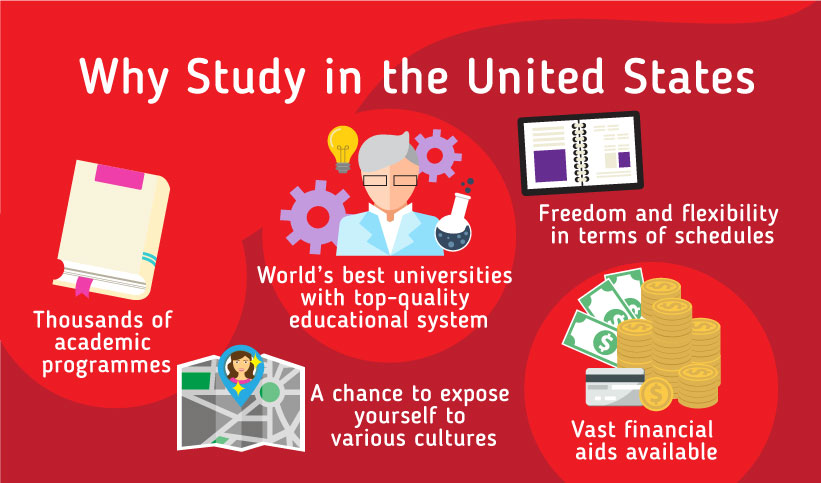
The US has the world’s highest population of international students. According to the Open Doors Report 2015 of the Institute of International Education, the number of foreign students in the country has increased over the years.
There are numerous reasons why internationals students come to study in the US. The country’s institutions thousands of academic programmes. This flexible and freedom for students to choose and arrange their timetable as they see fit makes studying the US ideal for any student. In addition to that, the US boasts the world’s best universities, with top-quality systems and programmes. Over the years, the institutions of higher education in the US have topped several world rankings, including QS World University Rankings® and Times Higher Education World University Rankings. You will also get a chance to learn, even work with the top minds in various industries. Furthermore, you will have the state-of-the-art facilities and research centres within your reach when you study in the US.
Students also choose to study in the US because of the vast financial aids available. Most universities would offer student grants, loans, and stipends to deserving students. This can be huge savings as these funds can help cover everyday expenses, such as food and transportation. Students can also spend their time doing part-time jobs on- and off-campus, some of which could also be related to your programme.
Studying the US is a chance to expose yourself to various cultures. What better way to learn and experience the world than to immerse yourself, with your classmates, and discover the world together while studying in the US. Not only is this an opportunity to educate yourself about the things around you, but it is also a good way to network yourself and meet people from every walks of life.
Higher Education in the US
The US ranks as the top country in the world with the most US universities constantly appearing in the top world rankings. In fact, half of the top 10 universities between the years of 2017/2018 comprised of US-based universities, with an impressive 31 universities ranked within the world’s top 100, and a further many much in the top 300.
Moreover, while there are a lot of options to choose from when it comes to studying in the US, the fact remains the same: a lot of students would always want to go to the Ivy League schools. This group is deemed to be a selection of the most prestigious universities in the world, being inclusive of Brown University, Columbia University, Cornell University, Dartmouth College, Harvard University, University of Pennsylvania, Princeton University, and Yale University.
A. Higher Education Institutions in the US
Should you decide to study in the US, you will be spoilt for choice as to where you want to go. It will surely take the time to select which one to go to, so here’s a list for your reference.
| Community Colleges | Colleges | Liberal Arts Colleges | Technical Schools | Universities |
|---|---|---|---|---|
| Also known as Junior Colleges
Often, but not always two-year colleges Lower tuition than state or private schools Graduates receive Associate’s Degree |
Complete your studies in four years
Larger number of students, greater range of studies Offers Bachelor’s Degree |
Focuses on Liberal Arts
Known for being residential and smaller enrollment and classes – they have higher teacher-student ration Some offer experimental curricula |
Focuses on a particular trade or set of technical skills
You can complete your studies in four years. |
Research oriented and offers both undergraduate and graduate programmes
Some universities offer professional schools (ex. Journalism, Medical, Business schools)
|
B. Pathway to Studying in the US
The length of your study depends on the path you wish to take. Here’s a basic duration of studying in the US
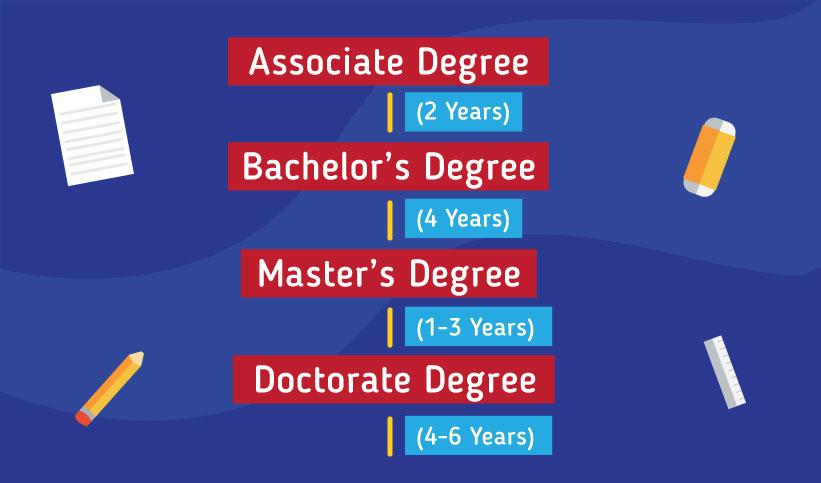
C. Top Institutions in the US
For decades, the US has always been a destination of choice for international students – and for years now, the country has always been consistent with the quality of education it offers. This is evident in the yearly rankings of universities and colleges in the US.
Here are the best universities in the US:
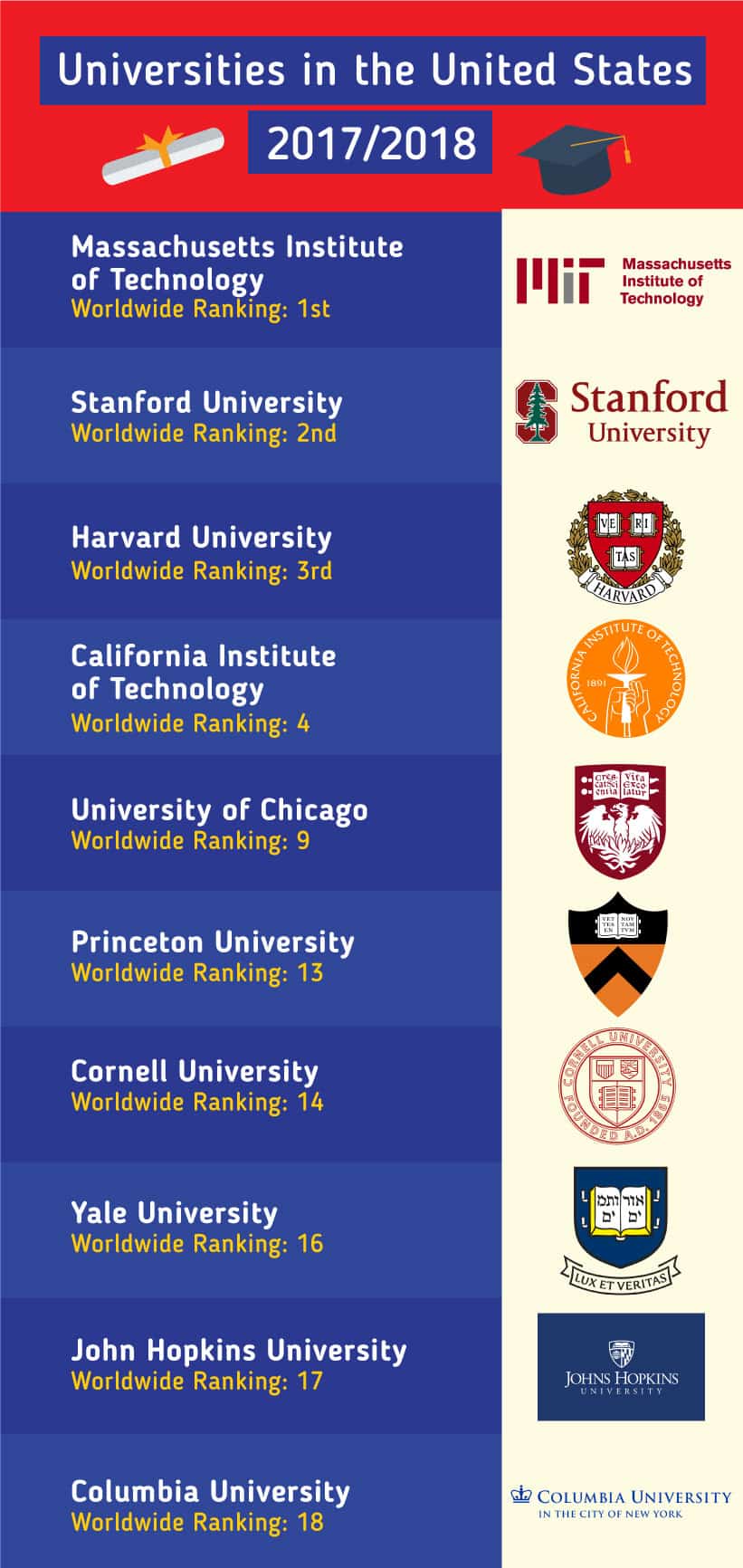
D. After Study Opportunities in the US
Job-hunting after studying in the US might be a difficult task as employers are often reluctant regarding visa and immigration. However, if you are determined to start your career in the US, there are plentiful of option available. To get more information, check out the US Citizenship and Immigration Services website.
Applying to Study in the US
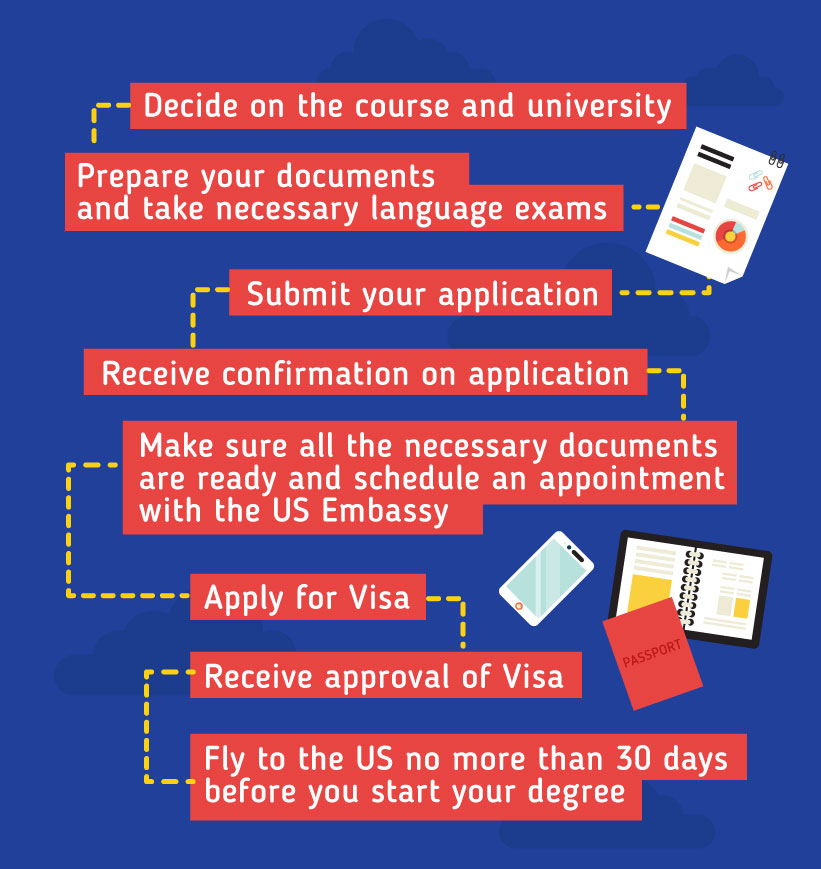
A. Language Requirements
English proficiency is required, which is usually different than the IELTS or TOEFL; these are called the SAT or ACT tests. Some universities may also have an admission test or require an essay from the prospective student. Personal statements and recommendation letters from previous teachers may also be asked of you. Students should, generally, be prepared for a variety of admission requirements — the cost of a world-class education, essentially!
Did you know? Competition to universities in the US, in particular, those within the top 100 in the world, can be tough. Hence, students are often judged on their merit of grades, extracurricular, among others.
B. Visa Requirements
Applying and receiving a student visa for study in the US can be a bit strenuous and lengthy — but it is always well worth the effort. Much of what you will need to present to start your visa application process is dependent on your country, so you must ensure your personal requirements beforehand.
Once you are accepted into your university of choice, you will receive an offer letter along with a Form I-20 or DS-2019. It is integral, however, that your university is a certified and accredited institution by the Student Exchange and Visitor Programme (SEVP). Fill these out, and then you must proceed to visit your local US Embassy for an interview to apply for the F-1 non-immigrant visa, where you must remember to bring:
- Your passport, which does not expire until six months after the end of your degree
- Form DS-160, the Online Nonimmigrant Visa Application form, filled in online with a photo attached and fees paid beforehand
- Form I-20/DS-2019, and any other forms provided by your university
- Your offer letter from the university
- Proof of financial stability throughout the course of your degree
- Academic transcripts and certificates
- Your intention to leave the USA upon completion of your degree
- Other forms and requirements based on your country
The decision to provide you with a visa is dependent on your interviewer, and you will receive your student visa no more than 120 days before your degree’s start date — though you are not allowed to travel to the USA until 30 days before the commencement of your degree.
Tuition Fees
While amongst the best in the world, private universities in the US are notorious for their steep tuition fees and tend to be amongst the most costly to attend. Most times, however, the cost of such an education is worth it. You can decide on the approximate prices listed below.
| Study Level | Tuition Fee, Per Year, in USD |
|---|---|
| Bachelor’s Degree | 25,000 – 50,000 |
| Master’s Degree | 30,000 – 120,000 |
| Doctorate Degree | 40,000 – 110,000 |
